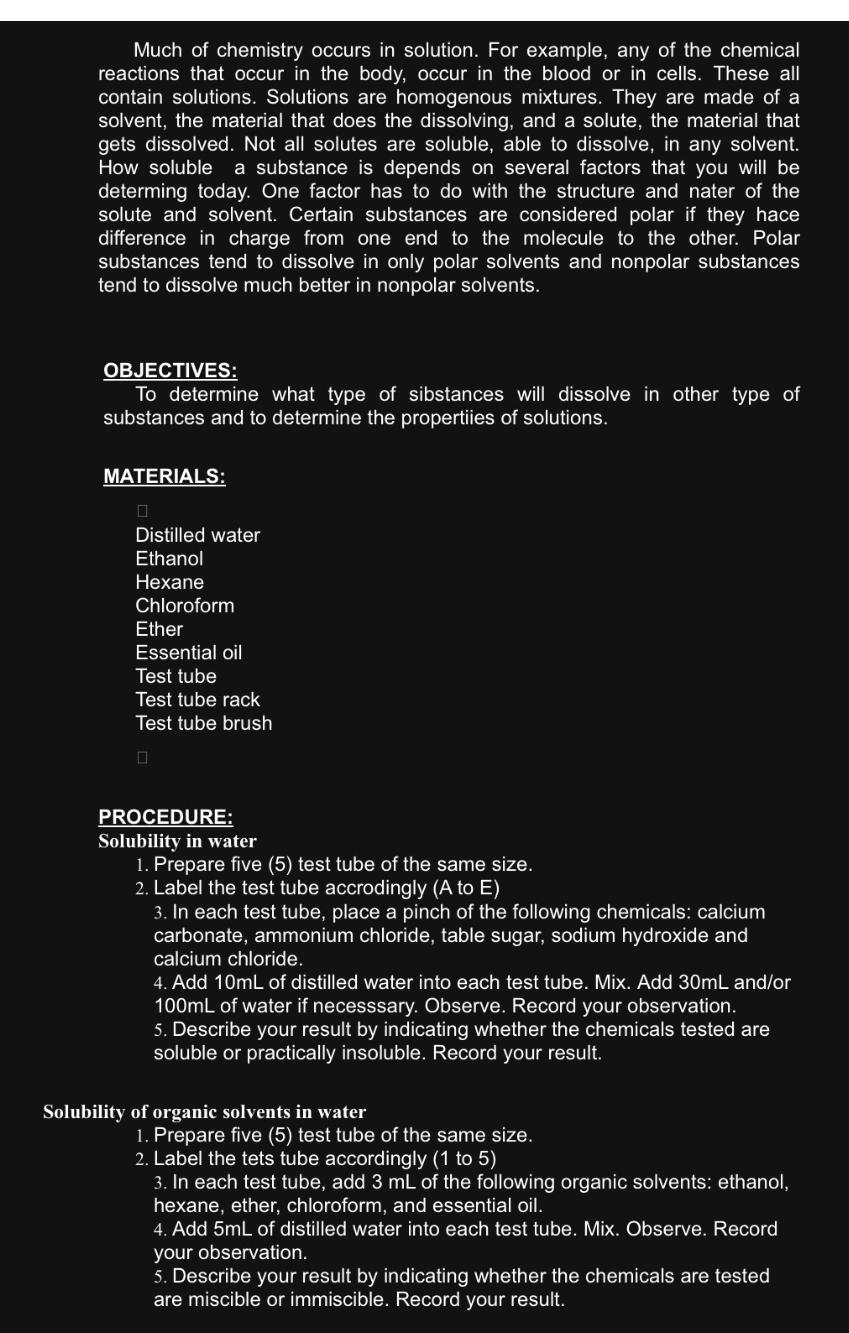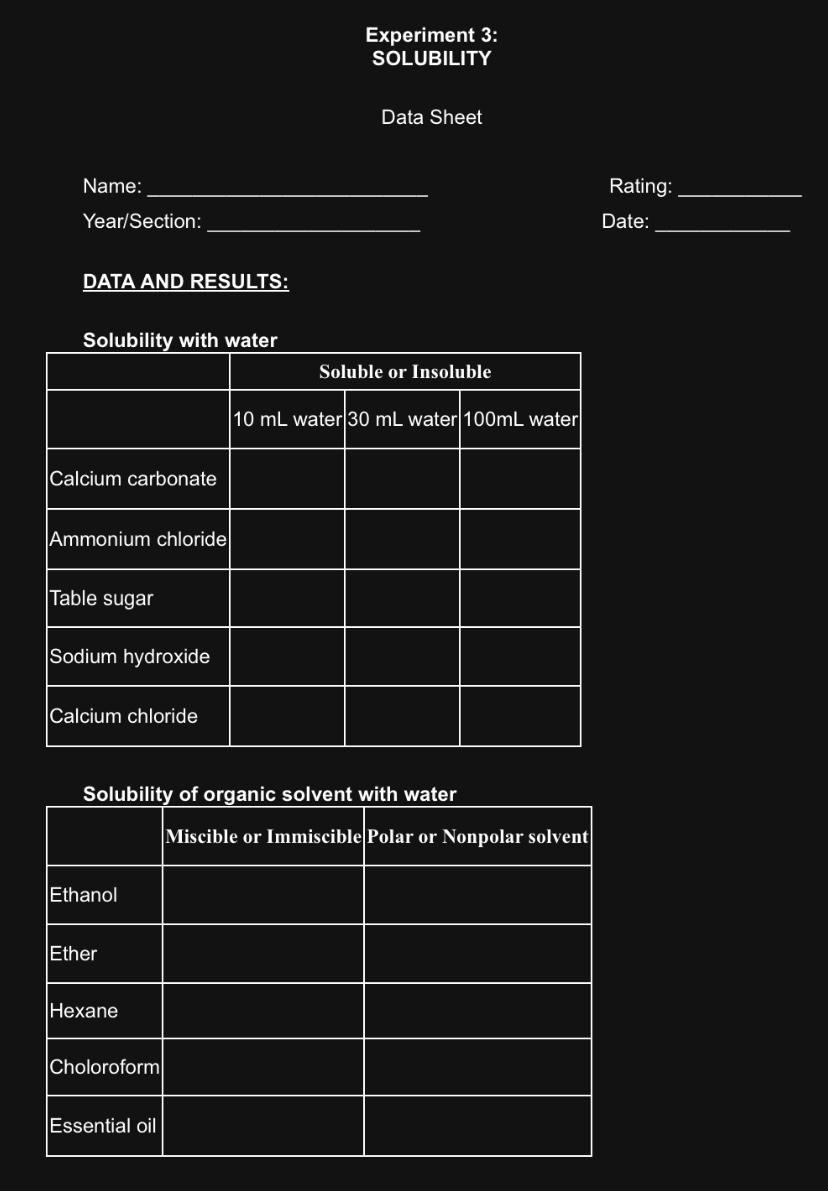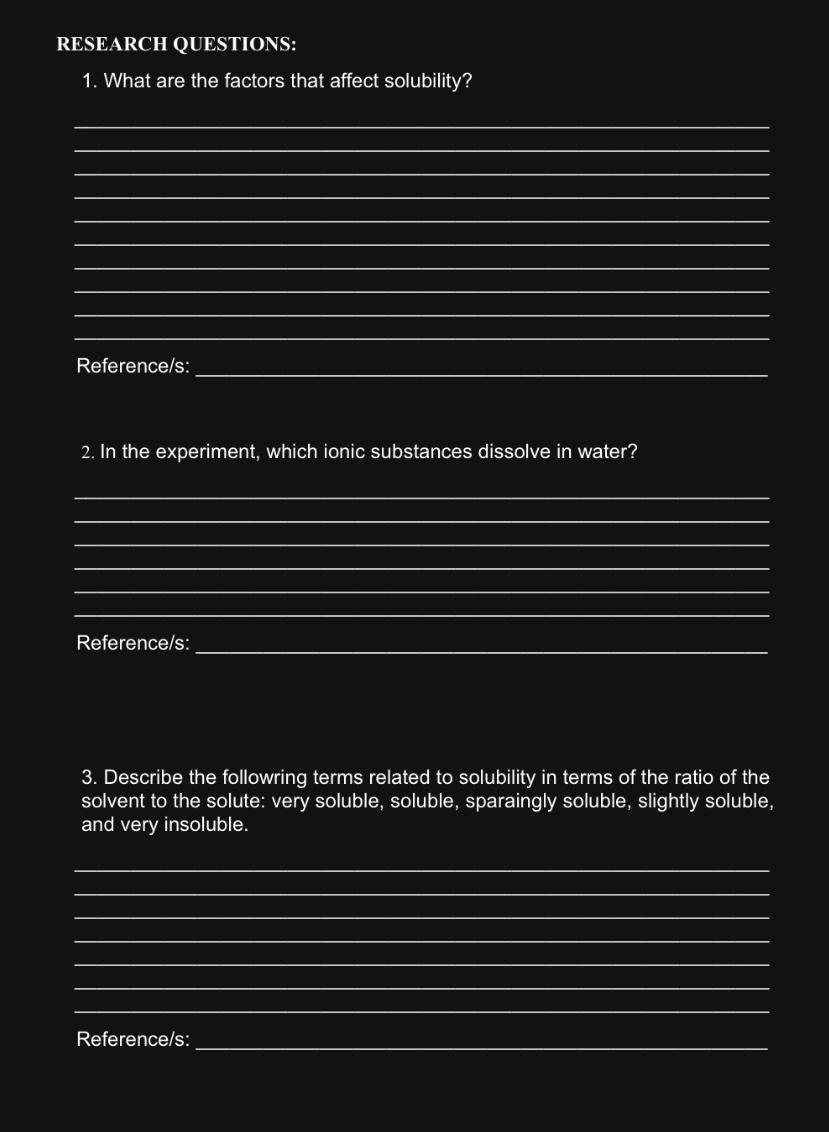Answered step by step
Verified Expert Solution
Question
1 Approved Answer
Much of chemistry occurs in solution. For example, any of the chemical reactions that occur in the body, occur in the blood or in



Much of chemistry occurs in solution. For example, any of the chemical reactions that occur in the body, occur in the blood or in cells. These all contain solutions. Solutions are homogenous mixtures. They are made of a solvent, the material that does the dissolving, and a solute, the material that gets dissolved. Not all solutes are soluble, able to dissolve, in any solvent. How soluble a substance is depends on several factors that you will be determing today. One factor has to do with the structure and nater of the solute and solvent. Certain substances are considered polar if they hace difference in charge from one end to the molecule to the other. Polar substances tend to dissolve in only polar solvents and nonpolar substances tend to dissolve much better in nonpolar solvents. OBJECTIVES: To determine what type of sibstances will dissolve in other type of substances and to determine the properties of solutions. MATERIALS: Distilled water Ethanol Hexane Chloroform Ether Essential oil Test tube Test tube rack Test tube brush PROCEDURE: Solubility in water 1. Prepare five (5) test tube of the same size. 2. Label the test tube accrodingly (A to E) 3. In each test tube, place a pinch of the following chemicals: calcium carbonate, ammonium chloride, table sugar, sodium hydroxide and calcium chloride. 4. Add 10mL of distilled water into each test tube. Mix. Add 30mL and/or 100mL of water if necesssary. Observe. Record your observation. 5. Describe your result by indicating whether the chemicals tested are soluble or practically insoluble. Record your result. Solubility of organic solvents in water 1. Prepare five (5) test tube of the same size. 2. Label the tets tube accordingly (1 to 5) 3. In each test tube, add 3 mL of the following organic solvents: ethanol, hexane, ether, chloroform, and essential oil. 4. Add 5mL of distilled water into each test tube. Mix. Observe. Record your observation. 5. Describe your result by indicating whether the chemicals are tested are miscible or immiscible. Record your result. Name: Year/Section: Experiment 3: SOLUBILITY Data Sheet DATA AND RESULTS: Solubility with water Calcium carbonate Ammonium chloride Table sugar Sodium hydroxide Calcium chloride Soluble or Insoluble 10 mL water 30 mL water 100mL water Solubility of organic solvent with water Miscible or Immiscible Polar or Nonpolar solvent Ethanol Ether Hexane Choloroform] Essential oil Rating: Date: RESEARCH QUESTIONS: 1. What are the factors that affect solubility? Reference/s: 2. In the experiment, which ionic substances dissolve in water? Reference/s: 3. Describe the followring terms related to solubility in terms of the ratio of the solvent to the solute: very soluble, soluble, sparaingly soluble, slightly soluble, and very insoluble. Reference/s:
Step by Step Solution
There are 3 Steps involved in it
Step: 1

Get Instant Access to Expert-Tailored Solutions
See step-by-step solutions with expert insights and AI powered tools for academic success
Step: 2

Step: 3

Ace Your Homework with AI
Get the answers you need in no time with our AI-driven, step-by-step assistance
Get Started


